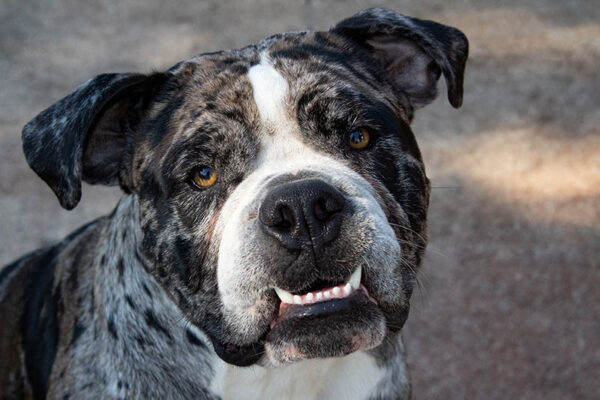Doberman Pinschers are often depicted for their upright ears, but these dogs are naturally floppy-eared, and their upright ears aren’t caused by their genetics. Instead, Dobermans with upright ears (and docked tails) attain the look due to cosmetic surgery.
Some owners of Dobermans seek to mimic the iconic ear style by surgically altering their dog’s ears with a process called “ear cropping.” Some people may find the change aesthetically pleasing, but research indicates that dog ear cropping is not perceived positively. In addition, the procedure itself doesn’t afford the dog any benefits when done for cosmetic purposes, and it is banned in many regions globally, such as in the UK.
Read on as we explain ear cropping in more detail.

What Is Ear Cropping?
Ear cropping is a surgical procedure that involves removing part of the dog’s ears, usually when they’re a few months old. After the initial procedure, which takes about 30–60 minutes under anesthesia, your Doberman’s ears are taped to a hard surface while they heal, conditioning them to stand upright.
History
These days, the recognized appearance of dog breeds often comes down to traditional ideas. Doberman ear cropping is no different, and back in the 1600s, their ears were cropped for functionality.
As a breed that has always been used for protection, ear cropping was a way to increase the intimidation factor of these otherwise floppy-eared softies.
Safety reasons also came into play here, especially with Dobermans used as hunting dogs and security. Floppy ears were thought of as easier to catch on trees as the dog raced past or even for attackers to grab. Their thin, leathery nature was perceived as easy to damage, and cropping them was seen as a way to prevent “hard-to-heal” ear injuries.


Is Ear Cropping Ever Beneficial to a Dog?
Ear cropping, when done for aesthetic purposes, offers no health benefits to a dog and has considerable risks and downsides.
Most Doberman owners use the traditional upright ear appearance of the breed to meet the American Kennel Club-recognized breed standard. Perhaps somewhat interesting, though, is the fact that according to the AKC, while upright ears are considered “normal”, having floppy ears does not result in penalties or disqualification.1 As such, having your dog’s ears cropped for the purpose of registering them isn’t considered necessary.
However it is worth noting that in some countries, your Doberman cannot be registered for shows if their ears are cropped. For example, The Kennel Club in the UK has banned the exhibition of dogs with cropped ears (and even docked tails) in dog shows as of 2007.2
It’s just as important to keep in mind that ear cropping for aesthetic purposes is illegal in many countries.
- Australia
- New Zealand
- Canadian provinces of Newfoundland and Labrador
- United Kingdom
- Most European countries (including Scandinavia countries)
The only instance where cropping a Doberman’s ears would be beneficial is if it is done for a medical purpose, not an aesthetic purpose. For example, if there’s a tumor on your dog’s ear, and a veterinarian deems it necessary to remove the tip of your dog’s ear to potentially stop the tumor from growing and spreading to other parts of the body, then the surgery is considered beneficial to the dog.


The Downsides to Ear Cropping
There are many reasons not to have your dog’s ears cropped for aesthetic purposes. While ear cropping was believed to be necessary in the past, it definitely isn’t the case these days. Many veterinary boards, including the American Veterinary Medical Association (AVMA), have a stance against the procedure. As mentioned above, the procedure (when performed for aesthetic purposes) is also banned in many parts of the world. Let’s look at the downsides in more detail.
1. Anesthesia Risk
An anesthetic risk is an evaluation of how safe anesthesia is for a patient before using it on them. Strictly speaking, while some patients are less at risk from anesthesia than others, there’s no such thing as risk-free anesthesia. Though complications from anesthesia are rare, some people think exposing one’s pet to a risk for a cosmetic (and therefore unnecessary) procedure is not justified.
2. Blood Loss
The ears are a highly vascular region of your dog’s body. This means that they are rich in blood supply, and there are many tiny vessels that run throughout the entirety of each ear. When the procedure is performed on your pup, they will inevitably lose blood. The amount of blood lost from this procedure can be a surprise to some owners and is considered very unnecessary by many, given that the nature of the procedure is purely aesthetic.

3. Pain
Your dog’s ear flaps also have nerve supply, and when they are surgically removed, it inevitably leads to pain. This is part of the reason why the procedure is performed under anesthesia. However, it’s important to note that anesthesia does not offer any pain relief. Therefore, though anesthesia will render your dog incapable of perceiving pain during the procedure itself, they will definitely be in pain once they wake up. Painkillers are often prescribed to dogs after the procedure to cope with the pain. However, just like us, some dogs may find the pain too unbearable and might show this by crying, appearing lethargic, and possibly refusing to eat.
4. Surgical Risk
Improperly applied sutures during the procedure may result in a dog that has permanently malformed ears. In addition, the surgical site may become infected post-operatively, especially if your dog’s bandages are applied incorrectly, become wet or soiled, or are loosened.
5. You Might Be Viewed Negatively
According to a study, it’s not just people’s perception of your dog that’s affected by having their ears cropped. Even you, as the owner, could be viewed differently by others. A study found that the owners who have their dog’s ears cropped are often perceived as more aggressive, more narcissistic, less playful, less talkative, and less warm compared to owners of natural dogs.3


Final Thoughts
Overall, ear cropping for aesthetic purposes isn’t necessary, and it is outlawed in many regions, and many veterinary associations have a stance against it. Though the procedure might have had relevance historically, advancements in literature and a closer look at the ethics have led to this procedure being viewed through a negative lens in most circumstances, and for good reason. Ultimately, it is seen as something that’s done for vanity, puts the dog through unnecessary pain, and places them at potential surgical risks as well.
See also:
- Male vs Female Dobermans: What Are The Differences?
- Best Dog Foods for Dobermans – Reviews & Top Picks
- Do Dobermans Make Good Pets? What You Need to Know
Featured Image Credit: DuxX, Shutterstock





















